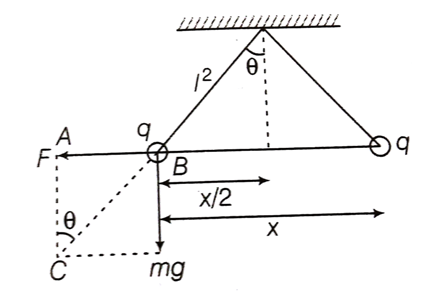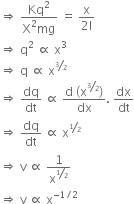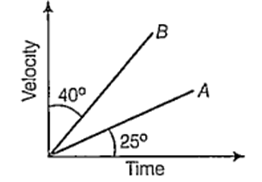A body falls freely for 10 s. Its average velocity during this journey is (Take, g = 10 ms-2)
100 ms-1
10 ms-1
50 ms-1
5 ms-1
C.
50 ms-1
In 10 s, the distance covered by the body
From the top of a tower a stone is thrown up which reaches the ground in a time t1. A second stone thrown down with the same speed reaches the ground in a time t2. A third stone released from rest from the same between reaches the ground in a time t3. Then
D.
When stone is thrown up
When thrown down,
When released
Two identical charged spheres suspended from a common point by two massless strings of lengths l, are initially at a distance d (d < l) apart because of their mutual repulsion. The charges begin to leak from both the spheres at a constant rate. As a result, the spheres approach each other with a velocity v. Then, v varies as a function of the distance x between the sphere, as
v![]() x
x
![]()
v![]() x-1
x-1
![]()
B.
![]()
Two identical charged spheres suspended from a common point by two massless strings of length L.
In △ABC,![]()
![]()
The charge begins to leak from both the sphere at a constant rate. As a result, the spheres approach each other with velocity v.
Therefore, equation (i) can be rewritten as,

If the magnitude of sum of two vectors is equal to the magnitude of difference of the two vectors, the angle between these vectors is,
90o
45o
180o
0o
A.
90o
There are two vectors P and Q.
It is given that,
![]()
Let, angle between P and Q is ![]() ,
,![]()

The velocity-time graph for two bodies A and B are shown in figure. Then, the acceleration of Aand B are in the ratio

sin 25° to sin 50°
tan 25° to tan 40°
cos 25° to cos 50°
tan 25° to tan 50°
D.
tan 25° to tan 50°
Acceleration deals with a change in speed magnitude, a change in direction or change in both.
Acceleration represents the slope of velocity-time graph
